As an honest, hardworking HVAC company, we are sick and tired of seeing homeowners in Boise, Meridian, and other Treasure Valley towns getting cheated out of their money every winter because of the all-too-common cracked heat exchanger scam.
It’s heartbreaking to see people lose out, especially around the holidays. And those scammers give the rest of the contractors a bad name!
So, we’re here to help you avoid getting fleeced for thousands of dollars by a crooked heating and cooling guy who’s insisting you need to buy a new furnace all of a sudden.
It’s the same thing every year! People get a card in the mail offering an inspection or tune-up for their heater at some low, low price like $39. A legitimate inspection and tune-up is a great way to keep your furnace working great all winter. So, for that money, who wouldn’t go for it?
Well, that’s how they get you. Next thing you know, the guy either has your furnace in a few pieces, or is showing you pictures of a crack you can hardly see, or showing you “readings” they just took from the furnace.
He’s then telling you the heat exchanger is cracked, it’s a safety hazard, and you need a completely new system!
They shut it off, insist you can’t turn it back on, and then you’re forced to shell out thousands of dollars, almost on the spot, just to stay warm all winter!
Well, no more. In this article, we’ll tell you:
- What The Heat Exchanger In Your Furnace Does
- Why The “Cracked Heat Exchanger” Is Often A Scam
- How Snowflake Air Does a Proper, Thorough Inspection
If you end up in this situation, don’t panic, and don’t make any purchases. Call us here at Snowflake Air, or at least an HVAC company you trust. Get a second opinion before you do anything else. You could save yourself thousands of dollars that way.
What Is A Heat Exchanger In A Furnace?
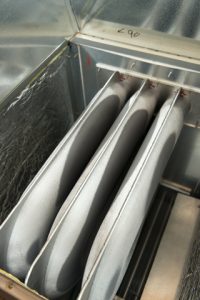
The heat exchanger in your furnace is the chamber where the gas or oil combusts to create heat. It’s located inside the furnace where you can’t see or access it easily.
The process of burning fossil fuels creates carbon monoxide, or CO, along with the heat. When everything is working the way it should, that poisonous gas leaves the system through the exhaust without ever entering your home.
Now, your furnace can leak carbon monoxide. But, it’s very, very rare with today’s systems. That brings us to the scam at hand.
Why The “Cracked Heat Exchanger” Is Often A Scam
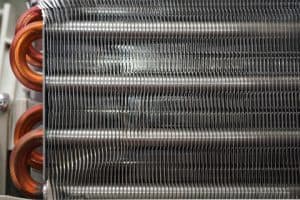
If your heat exchanger cracked, then yes: There is a chance carbon monoxide can seep out of the system and into your home. The heat exchanger is one piece, so if it cracks, you can’t swap out one part and put in a new one.
But, here’s the catch: It rarely happens anymore! They build today’s heat exchangers super tough. Unless you’ve put it through some extreme circumstances, or your heater is severely oversized for your home, it’s not going to split or otherwise break.
In fact, whenever we’ve seen a problem that had all the signs of a cracked exchanger, it’s usually turned out to be only clogged instead.
That’s why it’s essential to have an HVAC company take all the proper steps and precautions to confirm it’s not a cracked heat exchanger and that there’s no carbon monoxide leak. And that’s what we do here at Snowflake Air.
Five-Point Check For A Cracked Heat Exchanger
We determine if your furnace has a cracked heat exchanger with the following five steps:
- Check For Flame Disturbance
- Check CO Levels In The Air Stream
- Measure CO Levels In The Flue
- Check For Proper Installation
- Visually Inspect The Heat Exchanger
- Engineers designed this process through the Air-Conditioning Heating and Refrigeration Institute, or AHRI. That’s the country’s leading HVAC trade organization.
We won’t get too far into the weeds with the technical stuff. But, if you’re interested in it, you can get the particulars here.
For now, we want to highlight a few quick parts of each step. This way, you know what we’re doing and why it matters.
Check For Flame Disturbance
Our first step is making sure the flame is burning properly. That means it’s blue, not yellow or orange, and it’s not waving or anything like that.
Most of the time, our customers say the last guy never even bothered to show them this. Even when that’s okay, we still go on to the next step.
Check CO Levels In The Air Stream
Next, we’ll check directly for carbon monoxide in the air stream. Our monitors accurately measure traces of the gas down to parts per million. If there’s no sign of the gas, then the heat exchanger is fine. How can it be cracked if and not leaking CO?
Again, 99 percent of the time, the heat exchanger isn’t cracked. And, our customer didn’t get to watch the last guy do this. If they want, we’ll keep going.
Measure CO Levels In The Flue
The flue is also called the exhaust stack. It’s the outlet that gets rid of any gases coming from the furnace — including, of course, carbon monoxide.
If we notice the readings are too high, you could still be okay. Yes, there’s too much carbon monoxide. But, it might be a more straightforward fix.
You could have a problem with too much gas coming into the house without the right mixture of air. Remember, we’re more than 2,700 feet above sea level. An installer needs to adjust the pressure coming for the elevation.
Check For Proper Installation
If we haven’t found any abnormal CO levels by now, we won’t go on with this step and the last one. By now, we’ve done three precise, thorough checks, and everything came up fine. But, we can keep going if the customer wants us to.
Here, we make sure everything is installed and vented correctly. Again — if we noticed that problem in the flue, the cause may have to do with the airflow and venting.
Visually Inspect The Heat Exchanger
The last step would be taking apart the furnace and visually inspecting the heat exchanger. This takes a while and involves some labor charges. So, we don’t do this until we absolutely need to.
If we somehow get to the point where CO is showing up where it shouldn’t, and everything is installed correctly, we’ll go this route.
But, again: Most times, you’re fine! And, we’ll know this for sure two or three steps earlier.
What If The Last Company Turned Off My Furnace?
If the last company turned off your furnace, saying you had a cracked heat exchanger, we could turn it right back on once we confirm there’s no carbon monoxide leak. It’s as simple as that.
Don’t worry about any official-sounding stuff like a “red-tagged” furnace or whatever. You’ll hear a tech say they have to shut it down, and only a professional can turn it back on.
Well, we’re professionals. And, the only people that can shut your furnace off completely is the gas company. So, unless Intermountain Gas was out at your house, you can get your heat back on.
Of course, if we do detect a leak, we don’t turn the furnace back on. But that’s a rare occurrence.
Emergency Furnace Repair In Boise, ID
Call or email us at Snowflake Air for emergency furnace repair in Boise, ID. You may have had someone else threaten to shut off your furnace. Or you’re suddenly noticing problems on your own.
Whatever the case, you can count on us for honest, reliable service. We always take the time to answer all your questions and make sure you’re comfortable with whatever work we need to do.


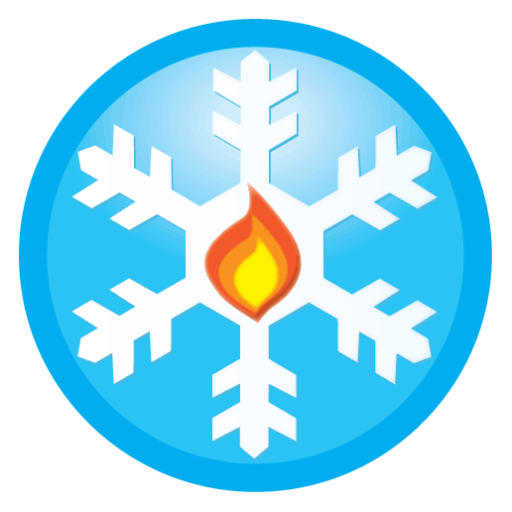
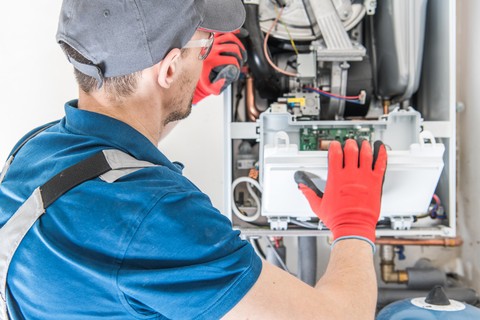
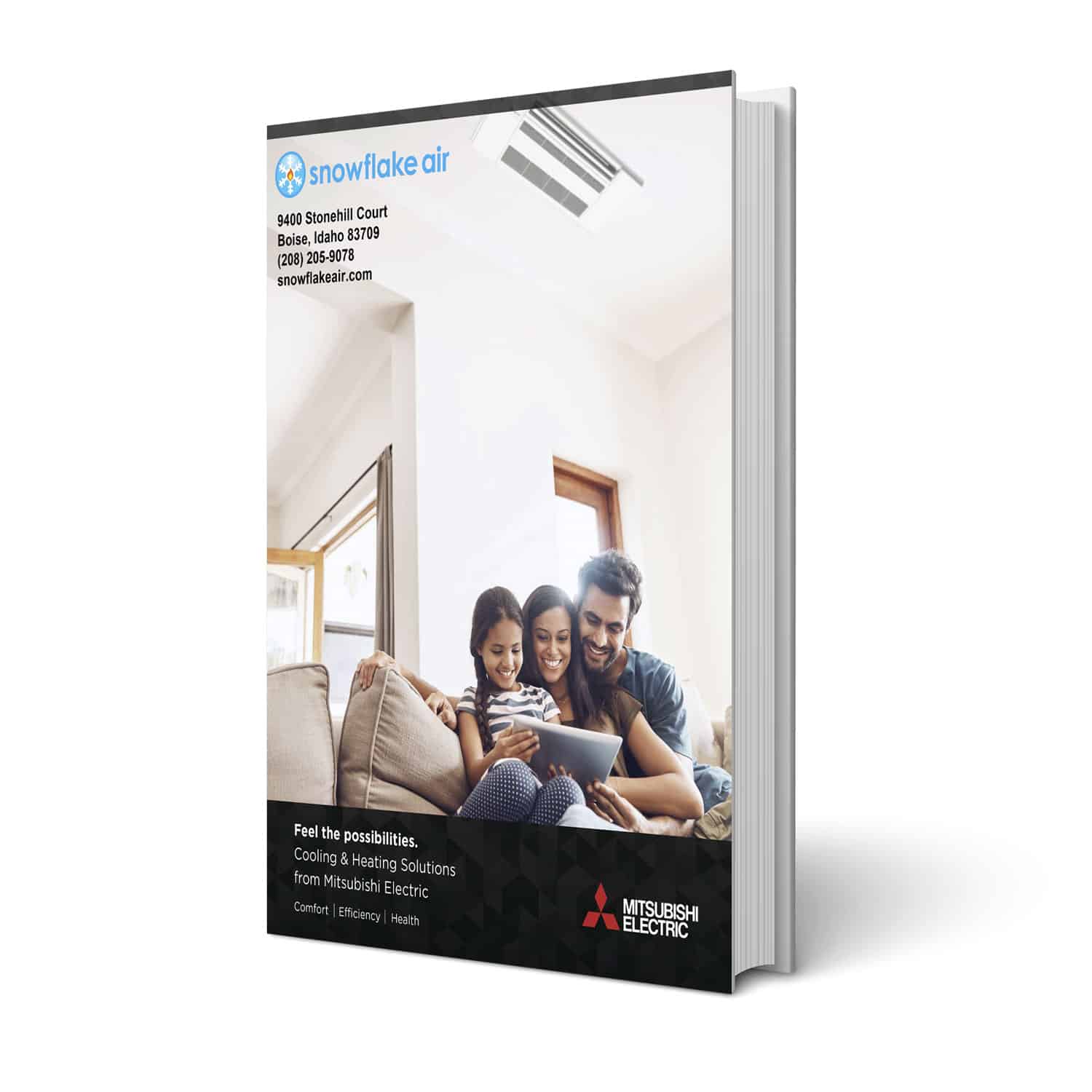
Trackbacks/Pingbacks